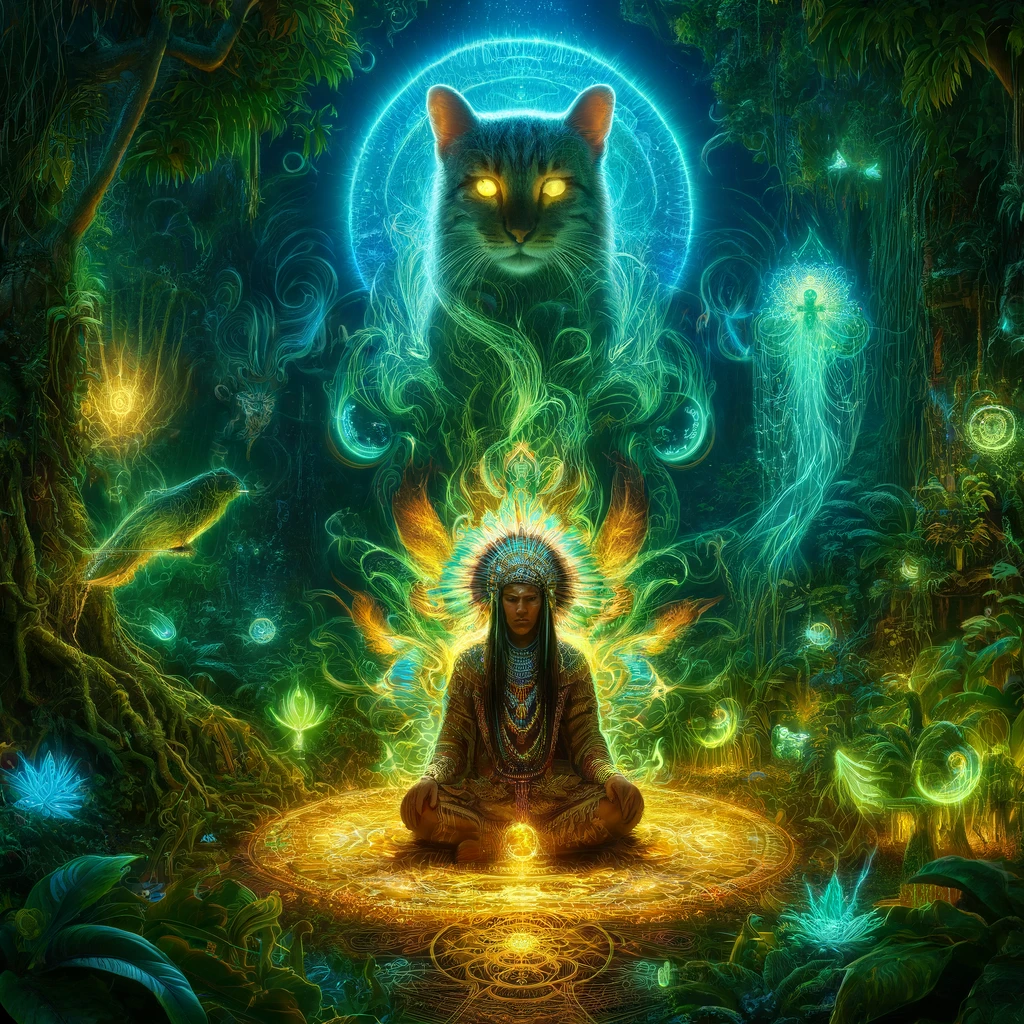The History of Psychedelic Microdosing: From Ancient Rituals to Modern Science
Is Microdosing Really A New Trend or An Ancient Practice?
Microdosing might seem like a modern biohacking trend, but its roots stretch deep into ancient traditions. Across cultures, low doses of psychedelics have been used for spiritual insight, resilience, and healing—from Mesoamerican mushroom ceremonies to Greek mystery rites and West African plant rituals. Today’s microdosing movement isn’t just a revolution—it’s a return to an ancient practice, now backed by science.
Ancient Psychedelic Practices: Sacred Low-Dose Use
Ancient cultures understood that psychedelics weren’t just for full-blown visions—small doses had profound effects too.
The Eleusinian Mysteries (Ancient Greece, 1500 BCE - 400 CE)
A secret ritual honoring Demeter & Persephone, where initiates drank kykeon, a psychoactive brew (possibly containing ergot, the natural precursor to LSD¹).
Said to induce deep personal insight, emotional healing, and spiritual awakening.
Mesoamerican Mushroom Traditions
The Aztecs & Mazatec people used psilocybin mushrooms (teonanácatl, or “flesh of the gods²”) for divination and healing.
Maria Sabina, a Mazatec shaman, helped preserve these traditions—some involving low doses for subtle spiritual guidance.
The Bwiti Religion & Iboga (West Africa)
The Bwiti tradition in Gabon uses Tabernanthe iboga in initiations, but also in smaller doses for endurance, resilience, and mental clarity.
Today, iboga is being studied for its potential to heal addiction and enhance neuroplasticity.
Amazonian Shamans & Low-Dose Plant Medicines
Ayahuasca shamans in Peru, Brazil, and Colombia have long used microdoses of plant medicines for balance and daily spiritual connection.
The 20th Century: Science Rediscovers Microdosing
Microdosing resurfaced in the mid-20th century as scientists began studying low-dose psychedelics for creativity and mental health. And we’re continuing the ancient exploration of the benefits of psychedelics beyond full-dose experiences.
Early Research on Low-Dose Psychedelics
1950s-60s: The First Scientific Studies
Albert Hofmann (LSD’s discoverer) experimented with microdoses, believing they could enhance well-being without overwhelming perception.⁴
Psychiatrists explored low-dose LSD & psilocybin for mental clarity and therapeutic potential.
The 1970s Psychedelic Ban & The Underground Movement
1970s-1990s: Psychedelics Banned, Research Stalls
As psychedelics were criminalized, research was shut down. Microdosing went underground but persisted in countercultures.
The 21st Century Microdosing Boom
2000s-Present: The Microdosing Renaissance
Dr. James Fadiman’s 2011 book, The Psychedelic Explorer’s Guide, put microdosing back on the map.
Scientists began studying its effects on mood, focus, and neuroplasticity.
Today, microdosing is embraced by entrepreneurs, therapists, artists, and mental health professionals.
What Can We Learn from the Past?
🍄 Respect the Medicine – Ancient cultures approached psychedelics with reverence and intention.
🍄 Set & Setting Matter – Rituals provided structure & meaning, just as intention-setting enhances microdosing today.
🍄 Low Doses = Big Impact – Not all indigenous psychedelic use was about visions—subtle doses were powerful tools for insight & resilience.
The Ancient Future of Microdosing
Microdosing isn’t just a tech-driven trend—it’s a return to an ancient human practice of using plant medicines for healing, creativity, and personal growth.
As modern science catches up, we’re bridging the gap between indigenous wisdom and neuroscience, creating a new era of mindful, intentional microdosing.⁵
🚀 Want to explore more? Stay connected with Microdelics for cutting-edge research, history, and practical microdosing guides. Share your thoughts and Microdosing stories below.
🍄 Sources & Further Reading
1️⃣ Ruck, Hoffman, Wasson (1978). The Road to Eleusis: Unveiling the Secret of the Mysteries.
🔗 Read here
2️⃣ Guzmán, G. (2008). Hallucinogenic Mushrooms in Mexico: An Overview.
🔗 Read here
3️⃣ Labate, B. & Cavnar, C. (2014). The Therapeutic Use of Ayahuasca.
🔗 Read here
4️⃣ Fadiman, J. (2011). The Psychedelic Explorer’s Guide: Safe, Therapeutic, and Sacred Journeys.
🔗 Read here
5️⃣ Tupper, K. (2002). Entheogens and Existential Intelligence: The Use of Plant Teachers as Cognitive Tools.
🔗 Read here









